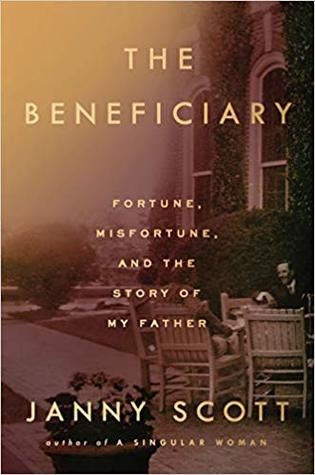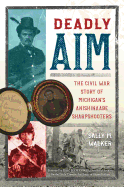 |
| photo: Beth Girone |
T. Marie Vandelly has wanted to write her entire life but, due to a career change, has only recently been able to pursue her dream full-time. The psychological thriller Theme Music (Dutton, July 23, 2019) is her first novel. Vandelly lives in Virginia on Gwynn's Island in the Chesapeake Bay with her husband and their dog.
On your nightstand now:
I am halfway through Where the Crawdads Sing by Delia Owens, but I don't think I will be able to finish it. I keep reading the same exquisitely written sentence over and over again. I barely get through one before the next heartbreakingly poignant metaphor stops me dead in my tracks. If I do make it to the end without dissolving into a puddle of mush, the next book on my nightstand will be harshly and unfairly judged. Sorry, An Anonymous Girl.
Favorite book when you were a child:
We Were Tired of Living in a House by Liesel Moak Skorpen, pictures by Doris Burn. I keep it on a shelf in my office to this day, and will flip through it every now and again. It has so much texture and heart. I still love looking for the cat. Later, when I discovered Nancy Drew, I got hooked on suspense thrillers and mysteries. If a book didn't have a ghost, monster or a dead body in the first couple of pages, forget about it.
Your top five authors:
Though there are many authors I love and would hate to leave off a list of favorites, if I am only allotted five, I would have to go with those whose works left me completely awestruck: John Steinbeck, Harper Lee, Toni Morrison, Donna Tartt and Michael Cunningham.
Book you've faked reading:
I wouldn't say I fake-read A Catcher in the Rye by J.D Salinger--though I did skim quite a bit--but I definitely faked my admiration for it. Personally, I think everyone is lying about how great it is. I reread it a few years ago to see if perhaps I had been too harsh on it originally but, no, I remain unmoved.
 Book you're an evangelist for:
Book you're an evangelist for:
The Poisonwood Bible by Barbara Kingsolver is the one title that always pops to mind when someone asks me for a reading recommendation. For months after I finished reading it, I worried and wondered about what had become of the characters. I could not stop thinking about them, like they were long-lost family members I hoped to reconnect with one day. Even after all these years, when there's news about the Congo, I listen for their names.
Book you've bought for the cover:
Midnight in the Garden of Good and Evil by John Berendt. I didn't know if it was fiction or nonfiction, murder mystery or romance novel, a literary masterpiece or a tourist guide to historical graveyards, but I was intrigued enough by the cover to want to find out--and pleasantly surprised that it had a little bit of everything.
Book you hid from your parents:
I used to sneak-read all the time as a child. If a book was deemed "too mature" for me, I just had to read it. My fourth-grade teacher once confiscated my parents' paperback copy of Jaws by Peter Benchley before I could secretly devour it during recess.
Book that changed your life:
To Kill a Mockingbird by Harper Lee ignited a passion in me like nothing else. Not just to write, but to write really, really well. I read it several times in a row to analyze her style, and figure out how one perfectly placed and chosen word could bring a character to life. If I write a particularly mundane sentence and think, ah, good enough, I try to imagine Harper Lee saying that to herself, and back the cursor up to try again.
Favorite line from a book:
"It's the possibility of having a dream come true that makes life interesting." --from The Alchemist by Paulo Coelho
Five books you'll never part with:
Though I have read all of these titles several times, I would be completely distraught to think I never could again: To Kill a Mockingbird by Harper Lee, Gone with the Wind by Margaret Mitchell, The Poisonwood Bible by Barbara Kingsolver, The Shining by Stephen King and Snow Flower and the Secret Fan by Lisa See.
Book you most want to read again for the first time:
Lord of the Flies by William Golding. Being forced to read this in high school, I couldn't, or didn't, fully appreciate it. Even now, when I think I might give it another shot, it feels like a homework assignment. But if I could read it now for the first time, without a book report due on completion, it could conceivably jump onto my list of all-time favorites.
Book you never got around to reading:
I'm embarrassed to say that I have never read The Great Gatsby by F. Scott Fitzgerald. It's really inexcusable. It's not a daunting undertaking, like War and Peace or Moby-Dick. It's only 200 pages! I could read it in a single afternoon. I even have a copy of it, somewhere. I'm sure I would like it. I might even love it. Okay, enough is enough. Today I will vow to read The Great Gatsby, eventually, probably not.
 Former New York Times reporter Janny Scott's The Beneficiary: Fortune, Misfortune, and the Story of My Father (Riverhead, $28) invites readers in for a glimpse of her family's prominence in Philadelphia's high society. (Her grandmother was considered to be the model for Katherine Hepburn's character in The Philadelphia Story.) All that glitters doesn't hold, however, as Scott shows how their family's wealth and troubled legacy contributed to her father's alcohol addiction and death.
Former New York Times reporter Janny Scott's The Beneficiary: Fortune, Misfortune, and the Story of My Father (Riverhead, $28) invites readers in for a glimpse of her family's prominence in Philadelphia's high society. (Her grandmother was considered to be the model for Katherine Hepburn's character in The Philadelphia Story.) All that glitters doesn't hold, however, as Scott shows how their family's wealth and troubled legacy contributed to her father's alcohol addiction and death. Love You Hard: A Memoir of Marriage, Brain Injury, and Reinventing Love (Dutton, $27) is Abby Maslin's deeply revealing and intimate account of the night her husband, TC, was randomly assaulted and left for dead. The young couple's struggle to adjust to life afterwards while raising a toddler will resonate with anyone coping with the loss of what one expected while learning to start over.
Love You Hard: A Memoir of Marriage, Brain Injury, and Reinventing Love (Dutton, $27) is Abby Maslin's deeply revealing and intimate account of the night her husband, TC, was randomly assaulted and left for dead. The young couple's struggle to adjust to life afterwards while raising a toddler will resonate with anyone coping with the loss of what one expected while learning to start over. Growing up, Susan Rudnick and her sister Edna were very close, despite the brain injury Edna suffered at birth that resulted in lifelong developmental challenges. In Edna's Gift: How My Broken Sister Taught Me to Be Whole (She Writes Press, $16.95), Rudnick takes inspiration from her sister after discovering, at 16, that she was born without a uterus (a condition known as Mayer Rokitansky Küster Hauser syndrome, or MRKH). Rudnick's journey toward acceptance, motherhood, a career as a psychotherapist--and now, first-time author at age 75--is triumphant. --Melissa Firman, writer at melissafirman.com
Growing up, Susan Rudnick and her sister Edna were very close, despite the brain injury Edna suffered at birth that resulted in lifelong developmental challenges. In Edna's Gift: How My Broken Sister Taught Me to Be Whole (She Writes Press, $16.95), Rudnick takes inspiration from her sister after discovering, at 16, that she was born without a uterus (a condition known as Mayer Rokitansky Küster Hauser syndrome, or MRKH). Rudnick's journey toward acceptance, motherhood, a career as a psychotherapist--and now, first-time author at age 75--is triumphant. --Melissa Firman, writer at melissafirman.com



 Book you're an evangelist for:
Book you're an evangelist for: Robert Mayer, journalist and author of the satirical superhero novel Superfolks (1977), died earlier this week at age 80. He attended the City College of New York and the Columbia University Graduate School of Journalism. After graduation, Mayer joined the Washington Post before going to Newsday, where he became its New York City columnist, and in 1968 he won the National Headliner Award, given to the best feature columnist in the country. In both 1969 and 1971 he won the Mike Berger Award, given for the year's best writing about New York City, and was the first person to ever win it twice. Mayer moved to Santa Fe, N.Mex., in the 1970s to focus on book writing. He was the author of 13 novels three nonfiction works.
Robert Mayer, journalist and author of the satirical superhero novel Superfolks (1977), died earlier this week at age 80. He attended the City College of New York and the Columbia University Graduate School of Journalism. After graduation, Mayer joined the Washington Post before going to Newsday, where he became its New York City columnist, and in 1968 he won the National Headliner Award, given to the best feature columnist in the country. In both 1969 and 1971 he won the Mike Berger Award, given for the year's best writing about New York City, and was the first person to ever win it twice. Mayer moved to Santa Fe, N.Mex., in the 1970s to focus on book writing. He was the author of 13 novels three nonfiction works. 











